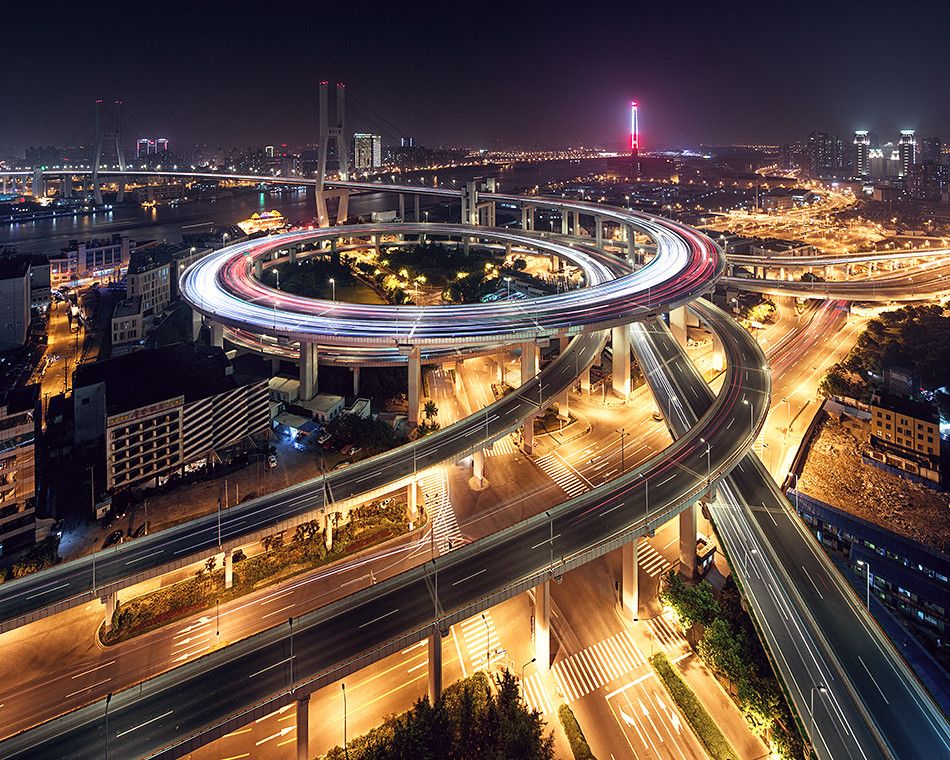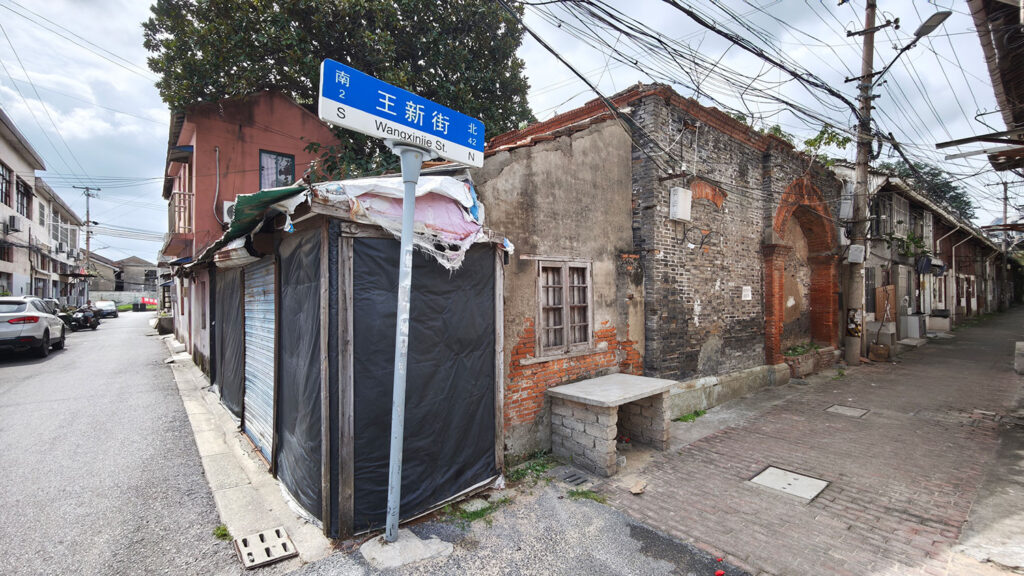Next Tuesday, I’m taking a one way ticket to China to start as strategist at Seventy Agency Shanghai. For months I’ve been looking forward and preparing for this. Yet there’s only so much I can learn from this side of the fence, and even in China I’m a foreigner and I’m not expecting to be able to understand everything and everyone quickly, if ever at all. But for the sake of preparing as best as I can, here are some predictions I have on China at the moment. (It’ll be interesting to return to this article in a year time, and see how wrong I was.)
I think five key influences stand out:
- Unique culture
- Rapid urbanisation
- One-child policy
- Rising economy
- Governmental power
Unique culture
Confucianism
China’s civilisation is thousands of years old, dating back to the same time as Ancient Egypt. While European, Middle-Eastern and Indian civilisations had plenty of exchange of products and ideas through trade and foreign influence, the Chinese have developed their own language, culture, philosophy and sense of aesthetics, which to this day remains similar. Confucianism was both a product and a tool of rural agriculture, and it dominated the Chinese school of thought, and it still does so today. Families are cornerstones of Chinese culture, with the overall success of one’s family being the highest aim of each individual.
Partial cultural vacuum
The irony is that China is also has a very young state, as the People’s Republic of China was founded only in 1949. Before that, China had a ‘hundred years of humiliations’, with conflicts over the empire, imperialists, Japanese and Russian invaders, as well as a civil war. Couple that with the Cultural Revolutions, aimed at destroying the ‘Four Olds’ (customs, culture, habits, ideas), and you have somewhat of a cultural vacuum — as well as the national trauma the revolution caused. While China’s way of thinking is extremely old, it has a subdued development in several aspects of culture, such as sport or modern arts, music or entertainment. While it is catching up on this rapidly, it is not as interwoven with culture as sport in Europe or the United States.
Rapid urbanisation
Tearing up Confucianism
More change is found in urbanisation. Fifteen million Chinese move to cities each year, and as almost sixty percent of the population lives in cities. While workers often send money home, it does break up families. In urban environments, life is way more individual than in the countryside. Everyone has his or her own career, and not the co-working relationship that peasants have. This is a stark contrast against millennia-old Confucianism. Groups, nowadays, consist less of different generations across families, but rather like-minded individuals that can easily meet through internet or in cities.
One-child policy
Adding pressure
The one-child policy further accelerated this dynamic, reconfiguring what ‘family’ meant. In the seventies, the average Chinese family had almost six children, but since the policy started in 1979, a single child carries immense pressure of two parents (and four grandparents). A child’s success is pivotal, as its parents only chance for elder care. Whereas there used to be eleven children for four parents, nowadays a young married couple has four parents to feed (and one or more children). This brings enormous pressure from parents on their children on education (the gaokao), career and finding a partner. Since parents only have one child, they rely on their single child to continue their family lineage. This pressure last until they marry.
Partner shortage
In the next twenty five years, over thirty million men of marriage age will be unable to find a wife simply because of demographics, a hangover caused by the one-child policy. But even though the surplus of men, woman are bullied if they’re not married before their thirties. It’s probably the shortage of woman that has caused this, with those pursuing a career or their singleness being labelled selfish. But it’s not that men don’t feel any pressure, they need a job, a house, a car, which is difficult in a competitive market with booming housing prices.
Rising economy
Generation gap
Then there’s a huge generation gap, not just in the usual ‘age’ gap, but also gaps in values, wealth and education, relationships and information. Children now have grown up in a vastly different environment than their parents, with a much bigger abundance in wealth. Parents are struggling to advice their children with choices they never had to make. Children don’t feel understood, and also under pressure and lonely.
Even more pressure and competitiveness
There’s plenty enough to worry about the future. With more graduates than places, jobs are scarce, workdays are long, general pay is low and overtime isn’t compensated, rents are high, commute is long. The truth is paradoxical, in that young workers will be stressed if they don’t find a top job, but when they do, they’ll equally be pressured in the role itself. The ‘iron rice bowl’ their parents had, is no more.
Wealth inequality and signs of nepotism
While it is possible to forge a successful career on merit, hard work and brains might not be enough to succeed. The rich and well-connected use their money and influence to get ahead, both of which some have plenty in a country with an increasing wealth inequality.
Coping with pressure
The result to an overload of pressure is likely stress or apathy. To cope, China’s youth use escapes through entertainment online (social media, movies, music) or offline (KTV), as well as shopping, whether it’s rational or on impulse — all made possible by having money.
Needs higher up Maslow’s pyramid
Unlike their parents, many post-eighties kids (balinghou) never had to fight hunger or poverty, never knew food rationing — but grew up in an abundance of wealth. Today’s youth has the technology and the means to satisfy needs higher op Maslow’s pyramid, such as creativity and self actualisation, presentation and individualism — which is only stronger in post-nineties children. This manifests in many ways, from selfies on Meitu to plastic surgery, but also in memes such as ‘Karma’s a bitch’ or Zang Zang Bao’, or shopping from indie brands.
Western products
Lured by its booming middle class, international companies are now in China, and through heavy investments in advertising, Western brands are managing to sell their products in China. Ten percent of Starbucks stores worldwide are in China, and BMW sells eighteen percent of all its cars worldwide to Chinese consumers.
Western values
Not just Western luxury goods have infiltrated China. While traditional Chinese values still hold true and Western values haven’t fully taken root yet, words — from baby (běibí) to whisky (wēishìjì) — are used, and so too are its values. Walk into any cinema and the majority of movies is from Hollywood. It’s not difficult to see how those values have an impact on young Chinese. This changes a lot. For centuries, Chinese marriages were contracts between families instead of individualism, based on pragmatism. While pragmatism and social class still play key roles, today, also love is taken into consideration, and marriage is more between two individuals. The same is true for jobs. Many young Chinese don’t find a job that meets their requirements. They either switch around (only 40% stay in their job more than two years), or they choose to stay unemployed longer. Younger Chinese want a meaningful life, not just have a house, partner and offspring. Individual presentation is also partly something Western, a move away from Confucianism and being ‘part of a whole’.
Pragmatism
Some nuance is needed. Elder generations are more pragmatic, but young ones often turn to it eventually, settling down for marriage and a steady career. In China’s near infinite pool of talent, they might come to realise that maybe they’re not the best employee or lover in the world. Surprisingly, the post-90’s show more realism in this than the post-80’s do or did.
Governmental power
Governmental pragmatism and authority
China’s government is led by pragmatism (and authority) too — and highly effective in taking fast-decisions, building immense airports and dams, a network of harbours, as well as twenty five thousand kilometres of high-speed railway lines (and another sixteen thousand in production). China is building in decades what Western countries haven’t managed to achieve in centuries. In Europe, Volkswagen’s CEO after dieselgate is enjoying his retirement at €3,000 a day. Meanwhile China sentenced two managers to death for the 2008 milk scandal.
China’s Communist Party takes lessons from Lee Kuan Yew’s model, the founder of post-colonial Singapore, which consists of an authoritarian governance with limited political freedoms for its people, yet one that puts the interest of its people first. But there are also hints of Japanese capitalism, with a ruthless private sector. A demonstration of China’s governmental effectiveness is simply the increased wealth China went through, in the form of education, infrastructure, health care and jobs — all at a rate incomparable to authoritarian in Africa and the Middle-East, or anywhere in the world, for that matter. The democracy in India is far less capable than China in fulfilling the needs of its people. With only a single party, China has no show politics, which are common in the West, as displayed by the election of Donald Trump and UK’s Brexit.
If you have it, flaunt it
Chinese love money. Whereas communism focused on frugality, Deng’s regime from the late seventies to nineties introduced capitalism and greed as something good. In its own way, Chinese love to show it, building on ‘guanxi’ which is the influence of a person, and prevent ‘mianzi’, loss of face. Luxury brands like Apple, Chanel and Starbucks have succeeded by catering to Chinese who love to show they’ve made it. This is more difficult to do for commodity brands, or products nobody sees (e.g. underwear). Thanks to the booming economy, China has new money on a massive scale, and thanks to the one-child policy there’s the ‘fuerdai’, China’s first generation of trustfund kids, who happily spend and flaunt their Prada and Louis Vuitton.
Environmentalism and importance of health
China’s impact on the environment is clear, from smog filled skies to PM2.5-mask-covered faces. The government’s campaign against pollution is working, lowering the smog above Beijing by over fifty percent already. Will this translate into individual shopping behaviour too? Will Chinese consumers want to prioritise sustainable products above non-sustainable ones? And will this be influenced by the maturing definitions of other areas too, such as health and wellbeing — prioritising natural and organic products.
Mobile technology
China’s rising economy coincided with the advent of the smartphone and adoption is huge. Changes in technology and economy are still ongoing in China at a much faster rate than in Europe. It does provide interesting challenges for retail, which might be less of a place for purchases, but more of discovery and amazement — then for people to buy the products at Tmall. (I’m quite unaware of China’s digital landscape for that matter. My girlfriend has a ton of apps on her phone, way more than me. But Alipay and WeChat and Weibo are entire ecosystems in themselves.) Taobao and Tmall also provide challenges for advertising, making brands even more important.
Changing world
It’s easier to have people change when a lot of change is already happening, so there are lots of brands tapping into that, trying to establish themselves as the go-to brand for a certain occasion or the owner of a certain style. Many ads in Shanghai are instructional like that, not asking for a direct response, but not really aspirational or conceptual either. Trying to go from zero to one sale. There’s Lenovo with a businesswoman and -man holding this laptop with glowing ‘internet’ lines coming out of it, as if to say ‘This is for business people, and it’s for successful people’. Danisa Cookies is advertising its butter cookies with some Dutch or Danish kind of king, as if to say ‘Royal and authentic quality’ (even though butter cookies are from the French kitchen). But then another ad they’re showing a typical Chinese grandparent with a kid, holding the packaging and smiling, as if to say ‘This is for family people’. Harbin had this ‘cloud catcher’ commercial to explain Chinese consumers what white beer is. And Costa coffeeshops are going all in on ‘Discover #LondonStyle’ coffee, even though the interior has no hints of England and its name sounds extremely Spanish.
Innovation, not just production
Again, some nuance is needed. There is still some distrust against Chinese manufacturers within China, the 2008 Chinese milk scandal still lingering. Younger generations want their products to be natural. But in the nineteenth century, China was no match for the Western industrialisation, but in the eighties and nineties, West came to know China as the factory of the world with ‘Made in China’ as something made possible by China’s low manufacturing wages and large-scale industry — something slabbed the back of cheap products like a Happy Meal toy. But soon it could signal the quality perception we now have with Silicon Valley innovations, German built-quality or Italian design. There’s irony in that China — once having a reputation for being a place for knockoff brands and being devoid of copyrights — is an increasing inspiration for Western companies. Apple Pay is straight out the WeChat textbook, while Uber is now copying China’s Mobike and Ofo by testing dockless bikes in San Francisco. (Ofo itself is going abroad, and introducing shared bicycles at Cambridge University in England. Mobike is active in Singapore, the United Kingdom, Italy and the Netherlands.) Niu is introducing electric scooters to the Dutch market, and Chinese brands such as Lenovo, Xiaomi, Oppo, Huawei and DJI opening stores around the world, and Alibaba’s Hema supermarket shows even giants can innovate. 12 of the world’s 100 most valuable listed companies are Chinese, and in 2017, Chinese brands submitted nearly 120.000 brand registrations for copyrights abroad, and is looking to beat USA in 2020 as the biggest source of copyright requests in the world. China’s leap to innovation is sparking fears from the US in particular that brands like DJI and Huawei pose a national security risk, and could be used for spying. Also on a cultural level things are changing. The three day 2018 China festival in Den Haag sat out to break old stereotypes of Chinese citizens in the Netherlands, theming their joking slogan “This Is Not A Kung Fu Festival”.
Global powerhouse
Since the turn of the millennium, China is investing in the rural parts of the country too, through three massive economic programs, namely ‘China Western Development’, ‘Rise of Central China’ and ‘Revitalise Northeast China’. While tier 2 (and lower tier) cities were once seen as separate markets, this is no longer true as markets are quickly converging. And to find new ways to export products and services, China is also looking beyond its borders, as over eight hundred Chinese corporations are doing business in Africa, investing in infrastructure, energy and banking (Africa duly got a spot in the CNY CCTV show). South-America is next, with annual trade now over two-hundred-and-sixty billion dollars.
Rising pride of being Chinese
Coming from the ‘Hundred Years of Humiliation’ and a century of victimhood through foreign invasion, today’s China is proud. It hosted the 2008 Olympics and 2010 World Expo, and movies like ‘Wolf Warrior 2’ show Chinese patriotism through Rambo figures, who at one point in the film hold up Chinese passports as a token of defiance. (On the other side is resistance against Western traditions coming into China, such as Christmas.) President Xi Jinping is coaxing the industry from production of export products, to one based on inland driven production and innovation, and with China’s governmental model proves highly successful in increasing and maintaining economic growth, and this not only gives a sense of proudness to individuals, but also as a country as a whole, adding to political influence on the world. In the future, it’s possible that China won’t just export products, but also ideas.
Key questions left:
- What does it mean to be Chinese in 2018?
- How will individualism relate to being part of a community?
- How will that affect self presentation?
- Will wealth inequality and housing prices continue to grow?
- How fast and how will Chinese sport and entertainment culture grow?
- How will mobile adaption mature?
- Will health benefits and sustainability become of higher importance? And in which way?
Further reading
On history of modern China (and trees)
Climbing the pyramid: advertising in a richer world

Articles used (among others)
Where are China’s millennials headed?
BrandZ Top 100 Most Valuable Chinese Brands 2017
China’s Selfie Obsession | The New Yorker
Making China Great Again | The New Yorker
A New Silk Road | The New Yorker
List of loanwords in Chinese – Wikipedia
Fuerdai – Wikipedia
Post-80’s – Wikipedia
Post-90’s – Wikipedia
Women in China – Wikipedia
Lessons from a 100-Year-Old Shanghainese Woman
China ‘overtakes’ Germany to become largest exporter – Independent
My grandparents survived the Cultural Revolution: Have I inherited their trauma? – Independent
Chinese Government Subsidies Play Major Part In Electric Car Maker BYD’s Rise – Forbes
It’s Uber…but for bicycles: The American on-demand leader takes a page from China – SupChina
Facing Challenges: China’s Post-90s Generation and Their Employment Market Conundrum – WhatsOnWeibo
China’s Post-90s Workers: The Job-Hopping Generation – WhatsOnWeibo
No Santa, No Reindeer, No Mistletoe – Party Members Banned from Celebrating Christmas – WhatsOnWeibo
10-Year-Old Girl Commits Suicide For ‘Not Doing Well at School’, Leaves Farewell Video – WhatsOnWeibo
“Zang Zang Bao” – The Hype Surrounding Beijing’s “Dirty Dirty” Chocolate Bread – WhatsOnWeibo
China’s tiered city system explained – South China Morning Post
Mapped: Chinese exports take over the world
Wat doet een Chinees eigenlijk op z’n telefoon? – NOS
Aan Weibo kun je goed zien waar China zich echt mee bezig houdt – VICE
China2025.nl
Wordt de oude, vervuilende brommer vervangen door ‘Tesla op twee wielen’? – NOS
Alle Chinese vooroordelen lijken op elkaar (en dat moet anders) – NOS
All but Banned in the U.S., Chinese Giant Huawei Is Welcomed in Britain — WSJ
How the West got China wrong — Economist
Why China Matters More Than Ever – Pragmatic Marketing
Where are China’s millennials headed? – CGTN
Film of Shanghai Marriage Market by “Leftover Woman” Goes Viral – Radii
China’s Lower Tier Markets: Brighter Lights, Brighter Eyes – Prophet
Why millions of Chinese men are staying single – BBC
‘Europa staat dichter bij China dan Amerika’ – Trouw
The Age of Social Credit – Wired
Introducing Douyin, China’s incredibly sticky short video app – Monday Note
Chinese merken doen steeds meer merkaanvragen buiten de grenzen – Fonk
Age of Social Credit – Wired
2008 Chinese milk scandal – Wikipedia
Why are western people more friendly than Chinese? – Quora
Videos
Karma is a bitch – Youtube
Yao Ming: Changing sport in China – Youtube
China, How It Is – YouTube
Confucianism – TravelChinaGuide
Xi bij afsluiting Volkscongres: ‘China zal geen centimeter prijsgeven’
From ‘Iron Girls’ to ‘Leftovers’ – Broadly
Films
Guanggun’er
Documentaries
Along the banks of the Yangtze – Ruben Terlou
Across the heart of China – Ruben Terlou
China’s Generation Gap – BBC
Books
Wild Swans: Three Daughters of China, Jung Chang
The Geography of Thought: How Asians and Westerners Think Differently, Richard E. Nisbett
Age of Ambition: Chasing Fortune, Truth, and Faith in the New China, Evan Osnos
Street of Eternal Happiness: Big City Dreams Along a Shanghai Road, Rob Schmitz
Wish Lanterns: Young Lives in New China, Alec Ash
Young China, Zak Dychtwald
Twilight in the Forbidden City, Reginald Johnston
Easternisation, Gideon Rachman
A Geek in China, Matthew B. Christensen



